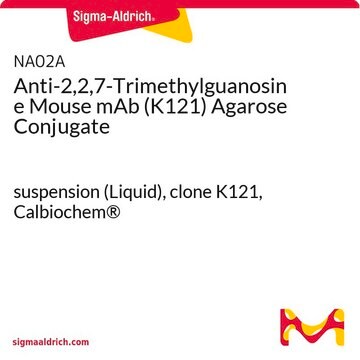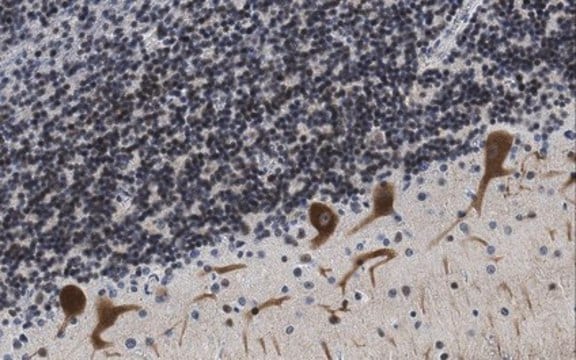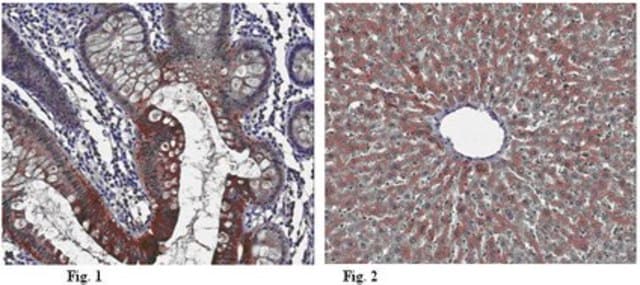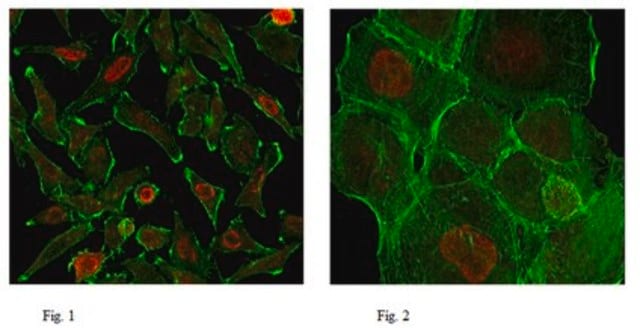MABE302
Anti-2,2,7-Trimethylguanosine Antibody, clone K121
clone K121, from mouse
About This Item
Prodotti consigliati
Origine biologica
mouse
Livello qualitativo
Forma dell’anticorpo
purified immunoglobulin
Tipo di anticorpo
primary antibodies
Clone
K121, monoclonal
Reattività contro le specie
human, mouse
tecniche
affinity chromatography: suitable
immunocytochemistry: suitable
immunoprecipitation (IP): suitable
Isotipo
IgG1κ
Condizioni di spedizione
wet ice
modifica post-traduzionali bersaglio
unmodified
Descrizione generale
Applicazioni
Immunoprecipitation Analysis: A representative lot from an independent laboratory was immunoprecipitated in IP (Moketi, S., et al. (2002). Mol Cell. 10(3):599-609.).
Qualità
Immunocytochemistry Analysis: A 1:500 dilution of this antibody detected 2,2,7-trimethylguanosine in NIH/3T3, HeLa, and A431 cells.
Stato fisico
Risultati analitici
NIH/3T3, HeLa, and A431 cells
Altre note
Not finding the right product?
Try our Motore di ricerca dei prodotti.
Codice della classe di stoccaggio
12 - Non Combustible Liquids
Classe di pericolosità dell'acqua (WGK)
WGK 1
Punto d’infiammabilità (°F)
Not applicable
Punto d’infiammabilità (°C)
Not applicable
Certificati d'analisi (COA)
Cerca il Certificati d'analisi (COA) digitando il numero di lotto/batch corrispondente. I numeri di lotto o di batch sono stampati sull'etichetta dei prodotti dopo la parola ‘Lotto’ o ‘Batch’.
Possiedi già questo prodotto?
I documenti relativi ai prodotti acquistati recentemente sono disponibili nell’Archivio dei documenti.
Il team dei nostri ricercatori vanta grande esperienza in tutte le aree della ricerca quali Life Science, scienza dei materiali, sintesi chimica, cromatografia, discipline analitiche, ecc..
Contatta l'Assistenza Tecnica.








